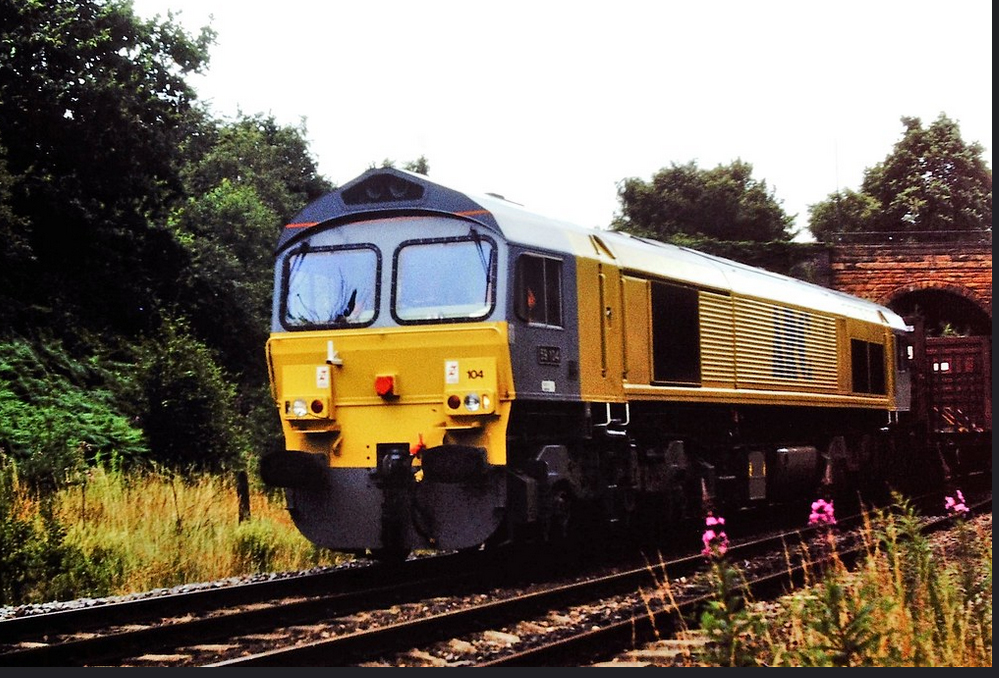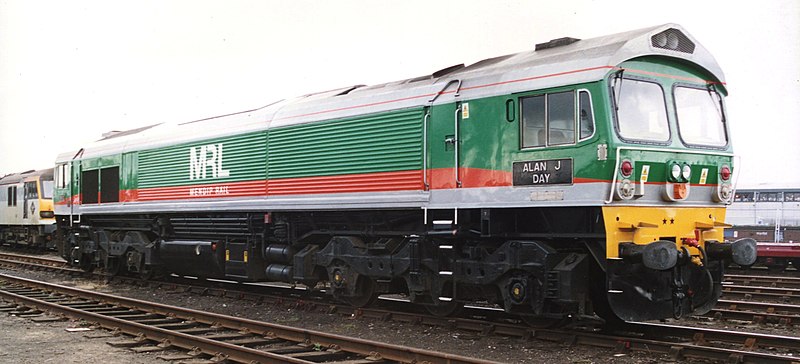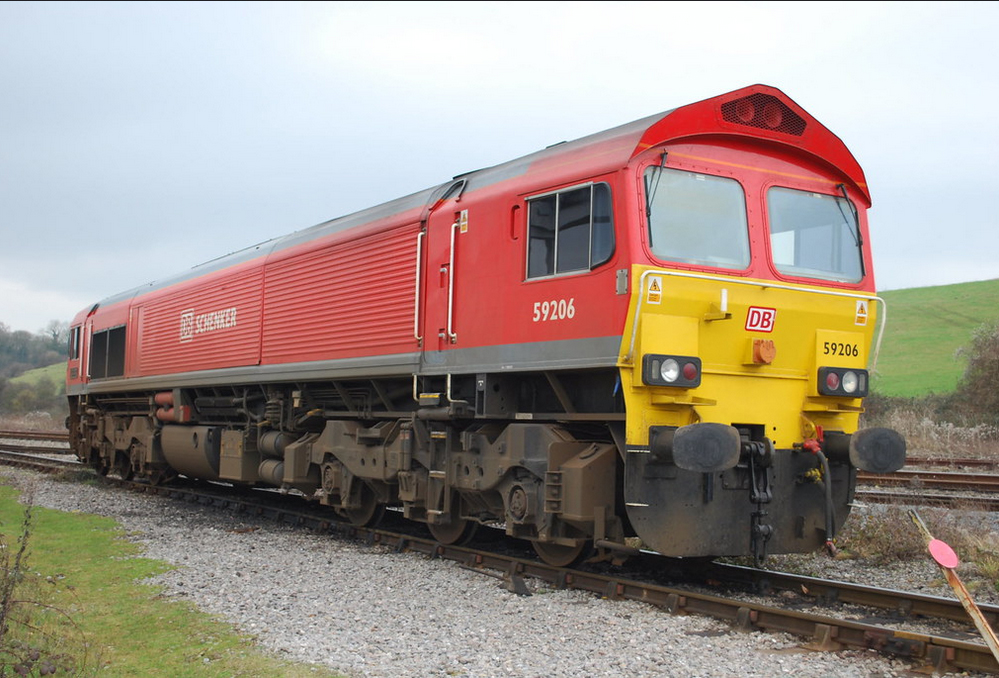

 STUART JORDAN looks back on the development of this hard-working locomotive.
STUART JORDAN looks back on the development of this hard-working locomotive.
EMD Class 59 locomotives were the first privately owned diesels to run on the British main line, as well as being the first US-built diesels to run on the UK mainland. They have worn many liveries over the past thirty-five years.

The Class 59 story starts in 1983. The quarrying company Foster Yeoman were unhappy with their current diagrammed fleet of Class 56 locomotives. Up to 40% of the services running from their quarry at Torr Works in Somerset were late arrivals, so Foster Yeoman decided to put out to tender for a replacement. An Electro-Motive Diesel (EMD) shunter was being used in the quarry so this American company, along with British firms Brush Traction and British Rail Engineering Limited, were invited to tender for six new locomotives. EMD were the only company to meet Foster Yeoman's high spec, so they won the bid.
Design began, with EMD basing the new locomotive on their SD40-2, which had 'Super Series' wheel creep control. This meant that a single-headed train could easily pull the heaviest loads that Foster Yeoman required. The locomotive was designed with a new engine and fitted with British style braking and safety systems. The cab layout was specifically designed to be like other British locomotives, so that it would be familiar to drivers. Construction began in 1985 at the EMD facility at La Grange, Illinois, with the first four new locomotives arriving at Southampton in January 1986. From there, they headed to the Railway Technical Centre in Derby for inspection.

Driver and maintenance crew training was undertaken, as well as test runs on the main line. Regular services using Class 59s began in February 1986 with a fifth locomotive joining the fleet in 1988. The class specification of these first Foster Yeoman locomotives was 59/0 and the locomotives were named Yeoman Endeavour, Yeoman Enterprise, Yeoman Highlander, Yeoman Challenger, and Kenneth J Painter.
The Class 59 turned heads in the aggregate haulage world, with ARC Southern ordering four of their own locomotives in 1987 which were built by EMD at their plant at London in Ontario, Canada. The 59/1 was different to the Foster Yeoman locomotives as the new arrivals were fitted with a more up-to-date light arrangement. The mustard yellow liveried ARC locomotives were all named after villages near Frome in Somerset. In 1993, ARC worked jointly with Foster Yeoman on the Mendip Rail agreement to operate aggregate trains from quarries in the Mendip hills in South-west England. Only one of the 59s seconded to Mendip Rail was repainted into 'company colours', with the rest retaining their owners' livery.

National Power required a single locomotive to run limestone trains to Drax Power Station in Yorkshire. It was ordered in 1991 and arrived in the UK in 1994, with a subsequent order for five more locomotives being placed for coal trains based at Ferrybridge at the National Power depot there. These 59/2 locomotives had additional yaw dampeners that had been tested on one of ARC's 59s. This allowed the locomotive to run at 75mph; 15mph faster than the 59/0 and 59/1. They also had improved fire control systems and batteries, and better slow-speed control for their use on the so called 'merry-go-round' coal train operation at power stations. In 1998, the National Power fleet of 59s was sold to EWS. EWS would later be sold to German operator Deutsche Bahn (DB) in 2007, running as DB Cargo. When DB Cargo lost the Mendip Rail contract in 2019 their Class 59/2s were sold to Freightliner, who had been awarded the same contract.

In 1996 Foster Yeoman formed a joint venture with DB Cargo, allowing them to run locomotives on the German network. 59003 Yeoman Highlander was working on Mendip Rail service at the time but was taken to Eastleigh to be modified for German service. It headed through the Channel Tunnel in May 1997 and, after testing, entered service in September of the same year. 59003 ran stone trains between Berlin and Hamburg carrying the number 259003-2. After the DB and Yeoman operation finished in 1999, 259003-2 was transferred to the new Heavy Haul Power International company, which had been set up by Richard Painter who had led the previous joint venture. The locomotive was withdrawn in August 2014 and was sold to GB Railfreight. Returning to England, it headed to Eastleigh for overhaul and was renumbered 59003. It re-entered service in the Westbury area.
The Class 59 was superseded by the EMD-built Class 66 locomotive, which is now used by freight operators in Britain and Europe. The Class 66 has the same body shell as the 59 and a larger engine and although many more have been built, the 59 remains in service to this day.

Class 59 003 Yeoman Highlander is being produced in both OO and N Scale in the Gaugemaster Collection. The OO Scale version will also be available with sound and smoke!
N Scale
GM2210501 Class 59 003 'Yeoman Highlander' GBRf
OO Scale
GM4210201 Class 59 003 'Yeoman Highlander' GBRf
GM4210202 Class 59 003 'Yeoman Highlander' GBRf (DCC-Sound/Smoke)
At time of writing, there is no Class 59 available from other manufacturers, but some due to be released. Dapol are producing the class in a variety of liveries in both OO and N Scales, and Hornby are due to release the 59 in OO as well.